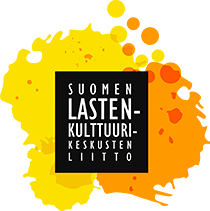Management and participation at home

The home is a central operating environment for the consumer. It is a diverse system that may consist of one or more members. A well functioning household is better able to withstand changes in circumstances. Awareness of one's own actions and the functionality and state of the environment requires the presence of an effective system of information and feedback, which can help prepare for new situations and flexibly adjust the ways things are done.
In the film Twisted Roots the household consists of the Kuurna family. The family has been through several events and situations that it could not process appropriately. Problems were not openly discussed or the processes of dealing with them never reached a conclusion. Perhaps the family intended to deal with them later, at a more appropriate time. Neither one of the parents was prepared to assume responsibility for the situation until the father's health took a significant turn for the worse. The mother had to assume responsibility and explain the situation to the children despite the father's resistance. By doing this, the mother took initiative in managing the family.
Managing the home is anticipation and being proactive, decision-making and assuming responsibility as well as inviting family members' participation in dealing with family matters. Managing the home and participation refers to maintaining household functions, allocating resources, making decisions and having the ability to assess factors that promote well-being. An individual's mastery of his own life is also part of managing the home. In the film, however, the mother takes it upon herself to manage the family without inviting participation from other family members. She contacts the father's adult son without the father knowing about it in order to have the son involved in deciding on the future of the father's business.
Managing the home and encouraging participation is being able to assess how habits influence our well-being, our ability to co-operate and our financial situation. Managing the home is the mastery of daily life, assuming responsibility and taking a leadership role.
Failure to master daily life results in drifting, where everyday tasks are no longer coped with. Floating in daily life means that the days lack basic structure and rhythm. Floating in daily life can be illustrated with a boat metaphor:
”The daily life of a family can be thought of metaphorically as being at sea. Getting in a boat often entails a specific objective: wanting to cross over to the opposite side of a waterway, seek out a good fishing spot or just go for a little joyride in the waters around a seaside summer cabin. For a row boat to move in the right direction, several types of skills are needed. One must be able to row or paddle using the equipment that's available, keep the bow of the boat towards the desired direction, interpret the direction and magnitude of wind waves or
waves made by others moving in the same waterways, know the depth and shape of the bottom and navigate accordingly to avoid excessive swaying of the boat, hitting underwater rocks or even
capsizing. One must also be able to stop the boat and, if necessary, anchor it at an appropriate spot. When rowing, a steady rhythm keeps the boat headed in the right direction.
Sometimes there can be two people rowing instead of one, but they must learn to synchronise their motion to keep the boat moving steadily and easily across the surface. If we stop rowing and fail to put down
the anchor, our boat will just float there and soon it will be drifting at the mercy of the wind and the currents.
(Reference: Korvela Pirjo, Holmberg Milla, Jonsson Mona and Kupiainen Antero: Balancing Daily Life project. From a Drifting to an Anchored Daily Life – supporting changes in the daily rhythm within family work with the use of the sequence map method.)
In the Kuurna family the family members were used to suppressing their thoughts and concerns, each taking responsibility on their own but failing to disclose these decisions to others. The skill of managing a home and encouraging participation is based on the ability to perceive objectives, roles and responsibilities, be proactive and hold on to joint work processes. The Kuurna family had made no plans for how and when the illness would be disclosed to the family, the parents' situation regarding bank guarantees for the mother's brother's loan was not appropriately kept track of and the grandmother's alcoholism was not discussed. The family inevitably drowned the issue of the father's progressing illness in the planning of the adopted child's "journey to her roots". They had a clear common, integrative dream and a sense of belonging together, but they were unable to manage the family's situation as a whole, which resulted in a piling up of the issues that had not been dealt with.
Managing a home and being a member of a household requires social skills, which help create the level of commitment needed in mastering everyday life. In the Kuurna family the crisis helped the family learn to be committed and create mutual understanding and tolerance of individual differences. Through acting as a part of a household, one learns participation and the skills of a consumer citizen.
Exercises
1. a) What is your own home like and who manages it? Discuss.
b) What do the following concepts mean: daily life, home, managing the home and household, inviting participation, drifting in daily life? Discuss in small groups.
c) Still in small groups, discuss the connection between drifting in daily life and social exclusion.
References:
Hille Janhonen-Abruquah (editor) 2009: Everyday life in the home (pp. 103-108). 2009. University of Helsinki.
Faculty of Behavioural Sciences. Department of Home Economics and Craft Science. The publication can be found at: http://helda.helsinki.fi/bitstream/handle/10224/4812/KODIN_ARKI_2009.pdf?sequence=1
”The book "Everyday life in the home" took shape during the 2008-2009 semester as a collaborative process involving the faculty and researchers at the Department of Home Economics Teacher Education. It approaches the topic of everyday life in the home from different perspectives. The book's collection of articles features the common themes of everyday life, action, skills and research. They are examined in the context of daily life and home economics teacher education.” (excerpt from Prof. Päivi Palojoki's epilogue to the book ”Daily life in the home”.)
2. a) People are offered various life management guides in the form of e.g. self-help literature and magazine articles. Find various life management guides. What suggestions do they provide for getting daily life in the home to run smoothly?
b) Choose one of the Kuurna family members and create your own life management guide for him or her.
3. a) The Kuurna family learned to manage their daily life and the family members went through significant personal growth. What did they learn through the crises they faced? How can you learn the management of daily life yourself?
b) In a family setting, skills in ”managing as a team” are needed (expressing feelings, anticipation and being proactive, interaction). Discuss what these skills are and how they can be learned.
Running away
Traditionally home economics skills have been seen to include food preparation, cleaning, fixing and repairing the home and family possessions, managing the finances and other skills related to consumption choices.
The characters in the film were running away from various things. What life skills are needed to cope with various life situations such as social or financial difficulties, problems from the past resurfacing, or illness? Write down advice for the Kuurna family for how to cope with their problems. You can make the advice into the form of a board to be hung up on a wall or the refrigerator, for instance.
1. a) Discuss the following:
- what are some of the things people can run away from?
- what things or actions can people run to?
- what are the causes of running away from various issues?
- what are the consequences of running away from issues?
b) In the Kuurna home and household, many issues were run away from:
Mother debt problems
Father illness
Lumi hole in the wall
Sakari going abroad
Pihla moving to a commune
Grandmother alcohol
Mother's brother irresponsible use of money
Find alternative ways of facing their problems for the Kuurna family members.
Anticipation and being proactive
1. a) What do anticipation and being proactive, planning and being methodical mean in managing the home and household?
Discuss why:
- the mother's brother's debt repayments were not kept track of?
- the parents agreed to underwrite the mother's brother's loan?
- no plans were made for the father's retirement?
- the mother had not told the family about her brother's financial difficulties in good time?
- the family failed to anticipate situations and be proactive?
- How to anticipate surprising situations? Can situations always be anticipated?
- What's the difference between anticipation and fearing the future?
b) Expand on the following: how would things have been different if the family had anticipated these situations?
2. Story: ”When the debt needs to be paid…”
The family finds they need to pay back the mother's brother's loan that was underwritten by the parents together. Come up with your own story of debt repayment for each of the characters in the film. (e.g. Pihla's story: suggest a reason for being in debt and how to move forward.)
A household doesn't function if it isn't managed
1. a) A home and household may consist of one individual or a combination of several members. Discuss what types of households are featured in the film.
b) The Kuurna family is a household. Discuss how the following household issues are reflected in the film:
- What consumption choices are made in the film?
- How are these choices planned and justified?
- What consequences do the choices have?
- Who bears the responsibility for family decision? What is that evidenced by?
c) Find a scene in the movie that illustrates
- Household planning and mastery
- Health and safety
- Home management and responsibility
- Choosing and using technology and media
Discuss what types of issues often lead to problems for the household.
What do we leave behind? How long does it last? Clothes get worn out in a matter of years. Dishes are used until the next move. Furniture breaks down or goes out of style. Just a pile of memories. They only last until no one no longer remembers them. Learned habits and learned mistakes. Unless someone learns from them and has the courage to break…
”What have we become and what do we leave behind?” is the question posed by the film. Discuss the meaning of that question together and suggest answers for it.





